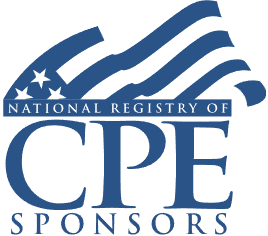Tax and Estate Planning With SLATs, GRATs, and IDGTs: Key Drafting Considerations for Counsel

Welcome! Strafford is now BARBRI! The expert courses you know from the trusted global leader in legal education.
Course Details
- smart_display Format
On-Demand
- signal_cellular_alt Difficulty Level
Intermediate
- work Practice Area
Estate Planning
- event Date
Tuesday, December 19, 2023
- schedule Time
1:00 p.m. ET./10:00 a.m. PT
- timer Program Length
90 minutes
-
This 90-minute webinar is eligible in most states for 1.5 CLE credits.
-
BARBRI is a NASBA CPE sponsor and this 110-minute webinar is accredited for 2.0 CPE credits.
-
BARBRI is an IRS-approved continuing education provider offering certified courses for Enrolled Agents (EA) and Tax Return Preparers (RTRP).
-
Live Online
On Demand
This CLE/CPE webinar will provide estate planners a detailed analysis of key challenges and pitfalls to avoid when drafting SLATs, GRATs, IDGTs, and other irrevocable trusts. The panel will discuss the legal framework and key considerations for irrevocable trusts, the pros and cons of trust protectors, beneficiary control and distribution provisions, retaining settlor flexibility and access, redirecting trust assets, and other key considerations.
Faculty

Ms. Braverman practices in the areas of estate planning, special needs planning, asset protection, elder law and business planning.

Mr. Kalsi provides valuation advisory services for gift and estate tax, financial reporting, litigation support, strategic planning, and other purposes. His focus includes preparing valuations of debt and equity investments in partnerships engaged in the business of developing real estate projects financed with tax credits (e.g., Low Income Housing Tax Credits – IRC Section 42, New Market Tax Credits -IRC Section 45D, Historic Tax Credits – IRC Section 47, etc.).

With more than 30 years of experience, Mr. Lipoff specializes in the delivery of domestic and international private client services to enable high-net-worth individuals and families to maximize their new or generational wealth. He provides strategic advice to his clients and their closely held businesses in the areas of income tax planning and compliance, estate planning and administration services, as well as family structure consulting. Through many years in practice, he synthesized the work of various related professionals, and their firms integrate several planning strategies into solutions that maximize value. Mr. Lipoff is a frequent lecturer and author of articles published through professional forums on topics including domestic and international - estate planning and fiduciary income taxation including constructive attribution rules for foreign trusts, Forms 3520 & 3520-A, Graegin Loans, business succession, generation-skipping transfers, Chapter 14 and carried interest estate planning for private investment fund principals, preferred freeze partnerships, and private placement life insurance.
Description
For most taxpayers, estate planning should focus on maintaining assets for a very comfortable life, while passing as much wealth net of taxes as possible to loved ones on a multi-generational basis. However, as interest rates rise, two strategies that have been extremely successful. We will review how GRATs and Sales to IDGTs work, while understanding the countervailing impact of rising interest rates. In any interest rate environment, GRATs and IDGTs are not without risks, including mortality risks that will result in the loss of estate tax benefits if the grantor does not outlive the terms of the trust and potential economic underperformance.
A GRAT allows a grantor to transfer growth assets into the GRAT, while retaining the right to required payments for a term of years. When the trust term ends, the remainder interest generally passes to or for the benefit of the grantor's children. So long as the grantor survives the GRAT term, the amount that passes to the beneficiaries is not subject to estate tax.
Another effective technique for transferring wealth to beneficiaries has been the sale or transfer of assets into an IDGT. The sale of an asset to an IDGT is not considered a gift event that would trigger gift taxes, and the sale is not considered a taxable event that would trigger any capital gains tax. Also, the sale accomplishes the removal of the asset from the taxable estate.
A SLAT is an irrevocable trust created by one spouse for the other's benefit by using the gift tax exemption to make a gift to the SLAT, naming the other spouse as a potential beneficiary, along with children and grandchildren. This allows limited access to the beneficiary spouse to the same assets and offers flexibility in structuring the trusts for client needs if estate planners effectively build in specific powers and options.
Listen as our panel discusses the legal framework and key considerations for irrevocable trusts, the pros and cons of trust protectors, beneficiary control and distribution provisions, retaining settlor flexibility and access, redirecting trust assets, and other key considerations.
Outline
- IDGT advantages and applications
- Structuring the trust
- Structuring the transaction
- Structuring GRATs
- Regulatory and statutory requirements
- Impact of interest rates
- Considerations for the use of SLATs in estate planning
- Access to trust assets
- Choice of trustee
- Impact of joint property
- Building in substitution powers and options
- Tax consequences for SLATs, GRATs, and IDGTs
Benefits
The panel will review these and other key issues:
- What are practical planning approaches for using SLATs, GRATs, and IDGTs?
- What drafting strategies should be used in creating GRATs, SLATs, and IDGTs?
- What seed money requirements should estate planning counsel consider?
NASBA Details
EDIT ME
- Field of Study: Taxes
- Level of Knowledge: Intermediate
- Advance Preparation: None
- Teaching Method: Seminar/Lecture
- Delivery Method: Group-Internet (via computer)
- Attendance Monitoring Method: Attendance is monitored electronically via a participant's PIN and through a series of attendance verification prompts displayed throughout the program
- Prerequisite: Three years+ business or public firm experience preparing complex tax forms and schedules, supervising other preparers or accountants. Specific knowledge and understanding of estate, gift and trust taxation including various trusts types, the unified credit, and portability.

Strafford Publications, Inc. is registered with the National Association of State Boards of Accountancy (NASBA) as a sponsor of continuing professional education on the National Registry of CPE Sponsors. State boards of Accountancy have final authority on the acceptance of individual courses for CPE Credits. Complaints regarding registered sponsons may be submitted to NASBA through its website: www.nasbaregistry.org.

Strafford is an IRS-approved continuing education provider offering certified courses for Enrolled Agents (EA) and Tax Return Preparers (RTRP).
Unlimited access to premium CLE courses:
- Annual access
- Available live and on-demand
- Best for attorneys and legal professionals
Unlimited access to premium CPE courses.:
- Annual access
- Available live and on-demand
- Best for CPAs and tax professionals
Unlimited access to premium CLE, CPE, Professional Skills and Practice-Ready courses.:
- Annual access
- Available live and on-demand
- Best for legal, accounting, and tax professionals
Unlimited access to Professional Skills and Practice-Ready courses:
- Annual access
- Available on-demand
- Best for new attorneys
Related Courses
Recommended Resources
Building Your Book: Strategies to Secure Long-Term Success
- Business & Professional Skills
- Career Advancement
- Talent Development
